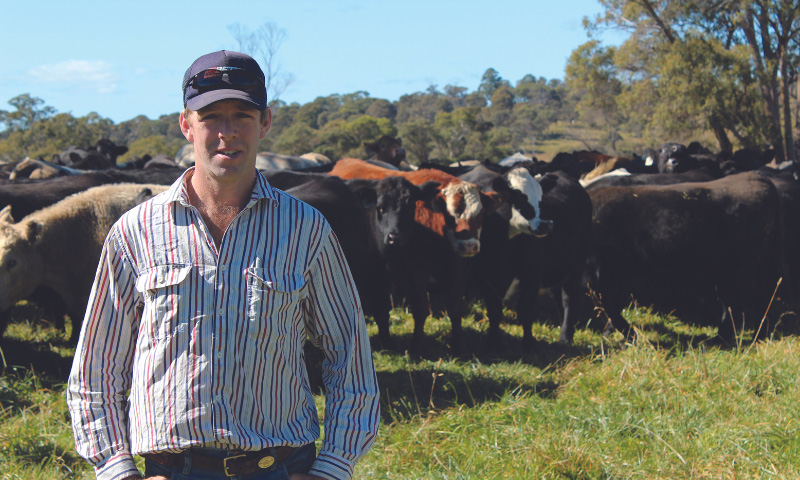Foot Abscess and Pinkeye – MegaMin can help!
Product Range: MegaMin Mineral Blend and MegaMin Extra Sulphur
Region: Wongwibinda, New England Tablelands, NSW
- Reduced Foot Abscess, pinkeye & ring worms
- Improved overall animal health
- Improved coat & colour
Prior to using MegaMin, Pinkeye and foot abscess were constant problems for Lock and Elizabeth Rogers who run 500 Angus breeders and trade 1000 steers and heifers each year on their property ‘Dyamberin’ at Wongwibinda (between Guyra and Ebor). According to Lock; “Initially we tissue tested our pastures and bled our cattle to confirm that minerals and trace minerals were lacking in this country and when looking for a mineral supplement to supply a broad spectrum of minerals, we came across MegaMin in 2008. Apart from the Pinkeye and foot abscess, ring worms were a problem, our black cattle were ‘brown’ and they were chewing the bark off trees.” All of these conditions are linked to nutrition or are classic symptoms of mineral deficiencies.
Within a few months I knew MegaMin was working for us because of the decline in animal health issues. This was confirmed in 2011 when we ran out of MegaMin for a short period of time between Christmas and the New Year, resulting in a big outbreak of foot abscess. Our cattle have had continuous access to MegaMin ever since.”
Lock and Elizabeth use the MegaMin Mineral Blend (macro mineral/trace mineral loose lick) all year round and occasionally switch to the MegaMin Extra Sulphur to assist with Lice and Buffalo fly when they are a problem. Intake of the supplement has been at the expected level most of the time however new cattle sometimes get stuck into it at first, so additional salt is fed out to slow intake at these times. Lock concludes: “We rarely see a pinkeye or foot abscess now and ringworm is a thing of the past. I put these improvements down to the nutrition and the health of our livestock. We plan to use the new MegaMin Extra Magnesium supplement for grazing our winter forages and oats and for grazing improved pastures in the spring.”
